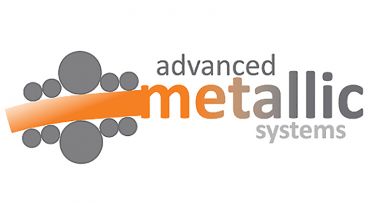Materials Informatics Approaches Towards the Acceleration of Hard Metal Development
Applying machine learning and thermodynamic analysis techniques to accelerate the design of new metallic alloys with improved properties for demanding industrial tooling applications.

This project focuses on designing advanced metallic alloys, known as high-entropy alloys (HEAs), for industrial tooling applications. Where conventional metallic alloys consist of a primary element with small elemental additions, instead HEAs are a relatively new class of alloys comprising multiple principal elements in either equimolar ratios or with elemental concentrations between 5 and 35 at.\%. Offering exciting possibilities due to their exceptional strength, wear resistance, and compatibility with modern manufacturing techniques. However, exploring the vast number of possible HEA compositions through experiments alone is time-consuming and costly. To tackle this challenge, machine learning was utilised to predict the properties of unexplored alloy combinations, supported by thermodynamic modelling. Promising alloy candidates were created and tested, revealing valuable insights for future alloy design both computationally and experimentally. This work demonstrated the potential of combining advanced computational tools and experiments to revolutionise and accelerate alloy development.
Problem:
High-entropy alloys (HEAs) are an emerging class of materials with exceptional properties like strength, ductility, and wear resistance, making them ideal for demanding industry tooling applications. However, designing HEAs is challenging due to their vast compositional space, with countless combinations of elements and concentrations. Traditional trial-and-error methods are slow, costly, and inefficient, hindering the discovery of optimal alloy compositions.
Solution:
To address these challenges, this project used machine learning and thermodynamic analysis to accelerate HEA design. Machine learning enables the prediction of alloy properties across unexplored compositional spaces based on existing experimental data, reducing the need for extensive physical testing. Thermodynamic analysis, specifically using the CALPHAD method, complements the machine learning by providing more detailed insights into alloy phase stability and assisting identification of viable alloy compositions.
Methodology:
The project involved training machine learning models on existing HEA data to predict properties such as phase formation and hardness as proxies for ductility and wear resistance. Predictions were refined through CALPHAD thermodynamic analysis, which evaluated phase stability and microstructure formation. Based on this combined approach, novel HEA compositions were fabricated and experimentally characterised, incorporating carbon reinforcement to enhance their properties. The combined machine learning - CALPHAD method successfully accelerated alloy design and discovery, identifying promising candidates for tooling applications.
However, the results of the machine learning predictions highlight the need for larger, standardised datasets to improve machine learning performance and unlock its full potential in HEA design. This integrated approach demonstrates a powerful pathway for advancing alloy development for industrial applications.
Impact:
This project highlights the transformative potential of machine learning in material science, particularly in designing advanced metallic alloys. The growing public awareness of machine learning, driven by tools like ChatGPT, Llama, and Gemini, demonstrates its capacity to tackle complex problems. In this project, machine learning was applied to material design, revolutionising a field that has historically relied on trial-and-error methods or serendipitous discoveries. By leveraging ML, this research accelerates the development of high-entropy alloys (HEAs), a class of materials with exceptional properties for industrial applications.
HEAs have the potential to replace tungsten carbide-based materials, which have dominated tooling applications for nearly a century. While effective, these traditional materials come with significant drawbacks, including high cost, challenges in manufacturing, and health risks from cobalt exposure. HEAs offer a solution, with improved wear resistance, ductility, and compatibility with modern manufacturing techniques like additive manufacturing. This project demonstrated that combining machine learning and thermodynamic modelling can rapidly identify promising HEA compositions, reducing reliance on costly and time-intensive experiments.
The impact of this work extends beyond material science. It illustrates how computational tools can innovate across industries, making processes faster, cheaper, and safer. For industries dependent on high-performance tools, such as automotive, aerospace, and manufacturing, this approach promises more efficient and sustainable solutions.
For the general public, this work represents a tangible example of machine learning’s potential to improve everyday life, from creating safer manufacturing environments to enabling more affordable products. By advancing material design, this project sets a precedent for harnessing computational power to solve critical industrial challenges and opens new avenues for innovation in science and engineering.
Biography:
Josh Berry earned a first-class master’s degree with honours in physics from the University of Sheffield, where I was awarded the Clark Prize in Experimental Physics. His master’s project focused on mitigating radon backgrounds in rare-event gas-based physics experiments, such as DRIFT-II, which search for dark matter. His bachelor’s project explored the use of infrared thermography to study titanium emissivity fluctuations in machining environments, giving him early, though unintentional, exposure to material science.
For his PhD, undertaken with the Advanced Metallics CDT and in collaboration with Oerlikon AM Europe GmbH at the University of Sheffield, he applied machine learning and thermodynamic analysis techniques to accelerate the design of new metallic alloys with improved properties for demanding industrial tooling applications. During his PhD, he also collaborated with the Artificial Intelligence Research Engineering team in the computer science department at the University of Sheffield, leveraging large language models to expand databases for training machine learning models.
He has now started a research associate position at the University of Sheffield looking at the reconditioning and recycling of powder feedstock for additive manufacturing.

Study with us
Study for a fully-funded PhD or EngD in Advanced Metallic Systems to explore innovative materials and manufacturing routes to increase sustainability and performance.

